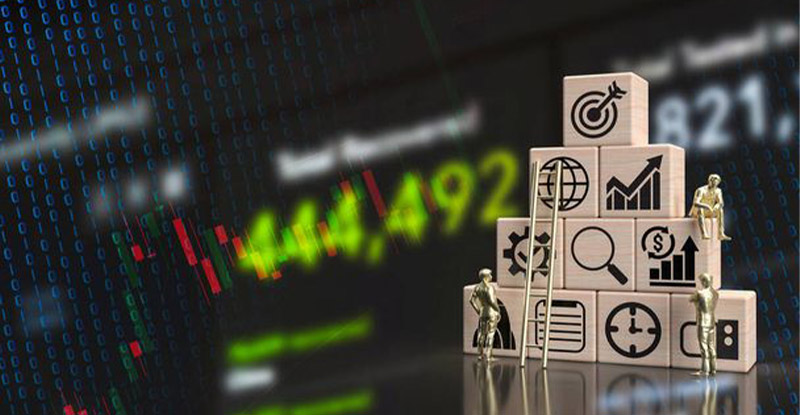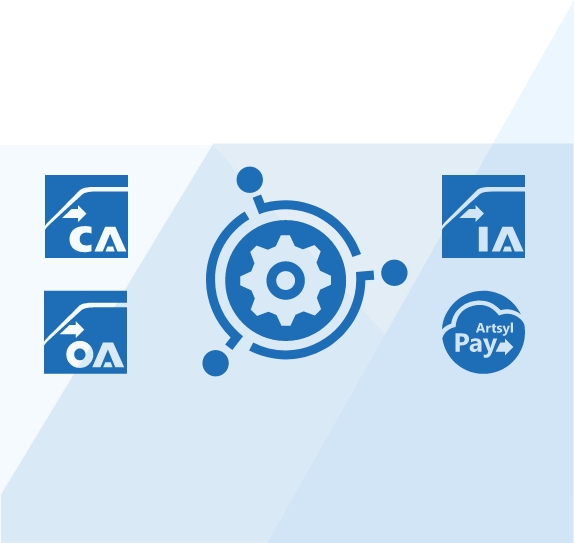The process of invoicing can be very time-consuming for businesses, especially those that still use manual methods. Sorting through piles of invoices to extract necessary data can be tedious and frustrating.
That’s why many companies are turning to AI-powered OCR invoice data extraction. This technology uses artificial intelligence to automatically extract data from invoices and convert it into a digital format. In this article, we’ll explore the benefits of using AI-powered OCR for invoice processing.

Are incessant errors and delays in your invoice processing slowing you down?
Switch to Artsyl’s docAlpha, where AI-powered invoice data extraction meets OCR technology to redefine accuracy. Don’t let manual errors cripple your accounts payable—choose docAlpha for precision you can trust.
Common Challenges in Invoice Processing
Invoice processing is a critical function for organizations, but it often presents several challenges that can slow down operations and impact efficiency. Here are some common issues:
- Manual Data Entry: Manual invoice processing is time-consuming and susceptible to errors, which can result in incorrect payments and reconciliation issues.
- Data Quality Issues: Erroneous, incomplete, or inconsistent data can lead to incorrect payments, non-compliance, and financial risks.
- Lost or Missing Invoices: Physical paperwork can get misplaced, leading to delayed payments and potential damage to supplier relationships.
- Delayed Approvals: The approval process can get bogged down if the right people are not notified promptly or if they are unavailable to sign off on an invoice.
- Inefficient Workflow: Lack of standardized processes can result in inefficiencies, such as bottlenecks during peak times, which can delay the entire payment cycle.
- Limited Invoice Visibility and Tracking: Without a centralized invoice processing system, it can be challenging to track the status of invoices, leading to delays and increased workload for accounts payable teams.
- Duplicate Payments: Poorly organized invoice processing systems can result in the same invoice being paid multiple times, requiring time and effort to rectify the mistake.
- Compliance Risks: Keeping up with tax codes, regulations, and industry compliance standards can be challenging, and failure to comply can result in penalties. Handling sensitive financial data requires robust security measures, and lapses can result in data breaches or fraudulent activities.
- Costly Process: The manual invoice processing involves multiple steps, each of which adds to the overall cost of invoice processing.
- Lack of Integration: Disconnected systems make it difficult to correlate purchase orders, delivery receipts, and invoices, often requiring manual intervention to match documents.
Addressing these challenges often involves a combination of improved workflow design, technology solutions, and ongoing monitoring and training.
Automated solutions like Artificial Intelligence (AI) and Machine Learning (ML) can significantly alleviate these issues by automating mundane tasks and enhancing accuracy. For instance, according to Aberdeen Group, companies that use automated invoice solutions can experience a 29% reduction in the cost of processing an invoice.
In today’s fast-paced business environment, time is of the essence. Artsyl’s InvoiceAction delivers real-time OCR-based invoice data extraction, empowering you to make quicker, data-driven decisions. Unlock a new level of agility—optimize your cash flow and vendor relations with immediate data extraction and processing.
Book a demo now
What is AI-POwered Invoice Data Extraction with OCR?
AI-powered Optical Character Recognition (OCR) refers to the application of artificial intelligence (AI) algorithms to enhance traditional OCR technologies. OCR technology is used to convert different types of documents, such as scanned paper documents, PDF files, or images captured by a digital camera, into editable and searchable data.
While conventional OCR has been around for decades, AI-powered OCR has introduced significant improvements, such as higher accuracy, the ability to learn, and versatility in handling more complex documents.
Invoice Automation Software
Related Videos
Key Features of AI-powered OCR
First of all, AI algorithms can understand the context around the text they’re extracting. Contextual understanding is especially useful in complex documents where similar pieces of information can have different meanings based on context.
Following that, machine learning allows the OCR system to improve over time by learning from the errors it makes, thus making it more accurate.
Natural Language Processing (NLP)
NLP helps the system understand the semantics and syntax of the text, making it particularly useful for extracting insights or summaries from large volumes of text.
Advanced Pattern Recognition
Invoice data extraction is not just about text; AI-powered OCR can also recognize patterns, shapes, and even handwriting, broadening the range of applications it can be used for. Also, with AI, OCR solutions can effortlessly handle a wide variety of languages, including those that don’t use Latin alphabets.
Real-time Processing
Improved speed and efficiency mean that AI-powered OCR can often work in real-time or near-real-time, essential for applications that require immediate results.
Where AI-Powered Invoice Data Extraction is Used?
According to MarketsandMarkets, the global OCR market is expected to grow from USD 5.27 billion in 2020 to USD 12.6 billion by 2025, at a Compound Annual Growth Rate (CAGR) of 19.1% during the forecast period.
This growth is attributable to the increased need to handle massive volumes of paperwork and the benefits of AI-powered OCR in automating such processes. Among the common applications of AI-powered OCR are:
- Invoice and Receipt Recognition: Automates the data capture process in accounting and finance departments. We are going to discuss this in more detail in the next section.
- Document Automation: Used in legal, healthcare, and various other sectors to automate the processing of large volumes of paperwork.
- Identity Verification: For automatically scanning and verifying documents like passports or driver’s licenses.
- Searchable Archives: For converting vast repositories of scanned documents into searchable and editable formats.
- Automotive Industry: Reading serial numbers or other information during manufacturing processes.
- Retail: Scanning product information or automating checkout processes.
Adhering to regulations is not just mandatory; it’s crucial for maintaining business integrity. With Artsyl’s docAlpha, benefit from a platform that complies with stringent security standards. Our AI-powered OCR technology ensures that every piece of data extracted aligns with industry-specific
compliance requirements.
Book a demo now
What Types of Invoices AI Invoice Data Extraction Can Process?
AI Invoice Data Extraction technologies are highly versatile and can process various types of invoices. They adapt to different formats, layouts, and data configurations, making them a robust tool for accounts payable automation. Here’s a look at some of the invoice types that AI Invoice Data Extraction can effectively handle:
Standard Invoices
This is the most basic form of invoices issued by suppliers. They usually contain fixed fields like invoice number, date, supplier information, line items, and total amount. AI algorithms can effortlessly extract this structured data.
Credit and Debit Notes
AI systems can also manage credit and debit notes, which adjust the amounts due for previously issued invoices. These often have a unique structure but carry similar fields to a standard invoice.
Recurring Invoices
In cases of monthly subscriptions or ongoing services, recurring invoices are often used. AI systems can recognize these patterns and automatically schedule them for payment or review, based on the predetermined frequency.
Pro-forma Invoices
Typically used as a preliminary bill to define the value of goods and services, AI systems can identify pro-forma invoices and segregate them for specific treatment as per business rules.
Utility Bills
AI can handle utility bills like electricity, water, or internet services. These bills usually have specialized fields such as usage metrics, which can also be captured and analyzed.
Freight and Logistics Invoices
Such invoices contain specific data like shipping details, freight charges, and tracking numbers. AI systems are adept at capturing these intricate details as well.
Purchase Orders
Although not strictly an invoice, Purchase Orders (POs) are often included in the invoice processing workflow. AI can automatically match POs against received invoices for validation.
Expense Reports
AI can process individual or bulk expense reports, validating them against company policy and extracting data for reimbursement.
E-Invoices
These are digitally generated and transmitted invoices. AI systems can ingest these through APIs, email, or direct uploads, without requiring any different treatment compared to paper-based invoices.
Multi-page Invoices
Sometimes invoices span multiple pages, especially in B2B transactions. AI systems can concatenate these documents and process them as a single transaction.
The capability to process a variety of invoices makes AI invoice data extraction software a valuable asset for any organization looking to automate its accounts payable processes. By efficiently handling multiple types of invoices, AI ensures that no opportunity for cost-saving or compliance is missed.
Why pour resources into manual invoice processing when you can automate and save? Artsyl’s InvoiceAction, standalone or part of docAlpha, enables you to significantly reduce operational costs by automating invoice data extraction. Move to InvoiceAction and turn your AP department from a cost center into a strategic asset.
Book a demo now
AI-Powered Procure-to-Pay Invoice Data Extraction
AI-Powered Procure-to-Pay (P2P) Invoice Data Extraction refers to the use of artificial intelligence technologies to automate and streamline the invoice data capture and processing stages within the P2P cycle.
Traditional P2P processes can be time-consuming, error-prone, and often require significant manual intervention for tasks such as matching purchase orders to invoices, validating invoice details, and ensuring compliance with internal and regulatory policies.
Key Features of AI-Powered Procure-to-Pay Invoice Data Extraction
- Intelligent Data Capture: Leveraging machine learning, invoice data extraction system can automatically identify, extract, and validate various data fields from invoices, such as supplier names, invoice amounts, and due dates.
- Natural Language Processing (NLP): NLP capabilities enable the system to understand and categorize the textual content of invoices, making it easier to extract metadata and enhance the subsequent automation steps.
- Contextual Analysis: The AI invoice data extraction system can understand the context in which certain invoice data appears, allowing for more accurate data extraction and fewer errors.
- Self-learning Algorithms: Over time, invoice data extraction system learns from any corrections or validations made, increasing the efficiency and accuracy of future data extraction. The machine learning models can achieve high levels of accuracy, minimizing risks associated with human errors.
- Compliance Checks: AI data extraction algorithms can be designed to automatically verify if the P2P invoices comply with regulatory and internal compliance guidelines. Easier to maintain compliance with automated checks ensures a comprehensive digital audit trail.
- Real-time Processing: AI-powered systems often work in real-time, thus expediting the approval workflows and payment cycles, and improving supplier relationships. Faster invoice processing leads to quicker payments, which is beneficial for building better relationships with suppliers.
As a result of applying AI invoice data extraction mechanisms, manual data entry and verification tasks are significantly reduced, freeing up human resources for more value-added activities.
In addition, automating the P2P process leads to lower operational costs, primarily by reducing errors and the time spent on manual verification.
According to a study by Ardent Partners, 45% of accounts payable practitioners consider manual data entry and inefficient processes their biggest challenge. AI-powered P2P Invoice Data Extraction not only mitigates these challenges but also adds strategic value to the entire procurement process.
The ability to capture and utilize data more effectively enables organizations to be more agile, make better decisions, and ultimately be more competitive in the marketplace.
Is your business growing exponentially?
Keep up with the pace seamlessly with Artsyl’s docAlpha. Designed to scale, our platform ensures that increasing invoice volumes won’t hamper your productivity. Don’t let growth become a bottleneck—scale effortlessly with AI-Powered OCR invoice data
extraction from docAlpha.
Book a demo now
Final Thoughts: Improving Invoice Data Extraction with AI-Powered OCR
In conclusion, AI-powered OCR invoicing technology is transforming the way businesses process their invoices. With improved accuracy, reduced costs, enhanced security, customizable solutions, and advanced data analytics, businesses can experience enhanced efficiency and transparency.
If you’re looking to optimize your invoicing and payment operations, it’s worth considering AI-powered OCR invoicing technology as part of your digital transformation strategy.


 AI-Powered OCR Document Processing
AI-Powered OCR Document Processing AI-powered AP Automation
AI-powered AP Automation The Artificial Intelligence (AI) Algorithms that Drive Invoice Data Extraction
The Artificial Intelligence (AI) Algorithms that Drive Invoice Data Extraction Document Scanning and Capture with AI Technology
Document Scanning and Capture with AI Technology Artificial Intelligence vs Machine Learning: A Comparison
Artificial Intelligence vs Machine Learning: A Comparison Machine Learning vs Artificial Intelligence: An Overview
Machine Learning vs Artificial Intelligence: An Overview

